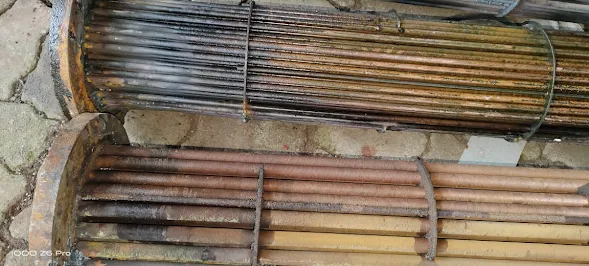Here's
a general outline of the steps involved in heat exchanger design calculations:
1.
Determine Heat Transfer Requirements:
Define the heat transfer rate (Q) required
for the application. This could be based on the temperature difference between
the two fluids and the desired overall heat transfer coefficient (U).
2.
Select Heat Exchanger Type:
Choose the type of heat exchanger that suits
your application, such as shell-and-tube, plate, finned-tube, or others. The
choice depends on factors like the nature of the fluids, space limitations, and
efficiency requirements.
3.
Fluid Properties and Flow Rates
Gather data about the properties of both
fluids, including density, specific heat, and viscosity. Determine the flow
rates (mass or volumetric) of the hot and cold fluids.
4.
Calculate Logarithmic Mean Temperature Difference (ΔTlm):
ΔTlm is crucial for sizing heat exchangers.
Calculate it using the inlet and outlet temperatures of both fluids.
5.
Select Overall Heat Transfer Coefficient (U):
Choose an appropriate overall heat transfer
coefficient based on empirical correlations or engineering data. U represents
the combined effects of conduction, convection, and radiation.
6.
Calculate Required Surface Area (A):
Use the formula: Q = U * A * ΔTlm to
calculate the heat exchanger's required surface area.
7.
Determine Tube or Plate Dimensions:
For shell-and-tube heat exchangers,
determine the number of tubes, tube arrangement (triangular, square), tube
diameter, and length. For plate heat exchangers, calculate the number of plates
and plate size.
8.
Pressure Drop Calculation:
Estimate the pressure drop in both the hot
and cold fluid paths. This involves considering fluid velocity, pipe geometry,
and frictional losses.
9.
Material Selection:
Choose suitable materials for the heat
exchanger components based on compatibility with the fluids, temperature, and
corrosion resistance.
10.
Safety Considerations:
Ensure that the heat exchanger design meets
safety standards and can handle potential thermal expansion, pressure
fluctuations, and other operating conditions.
11.
Iterate and Optimize:
Perform iterations to refine the design.
Adjust parameters like surface area, tube dimensions, or flow rates to achieve
the desired heat transfer performance while staying within practical and
economic constraints.
12.
Detailed Engineering and Documentation:
Create detailed engineering drawings and
documentation for manufacturing and installation. Include specifications for
materials, dimensions, welding, and other relevant details.
13.
Simulation and Validation:
Use heat exchanger simulation software or
conduct physical tests to validate the design before actual implementation.
It's
important to note that heat exchanger design can be complex and might require
specialized software tools and expertise. Consulting relevant engineering
codes, standards, and experienced professionals is recommended to ensure a
successful and efficient heat exchanger design.
Hot Fluid
Cold Fluid
Heat Transfer Rate: N/A kW
LMTD: N/A °C















0 Comments